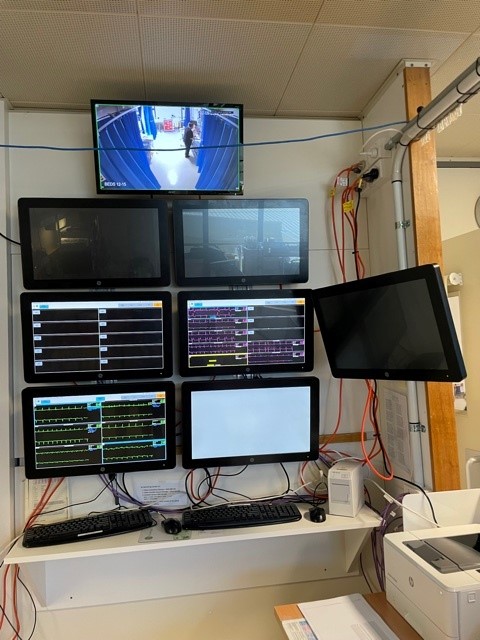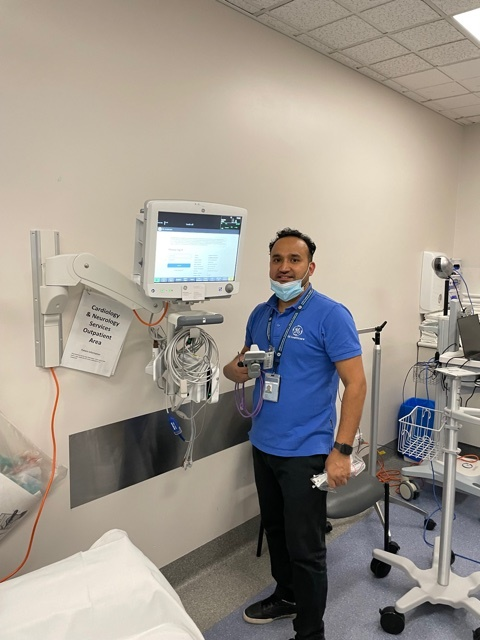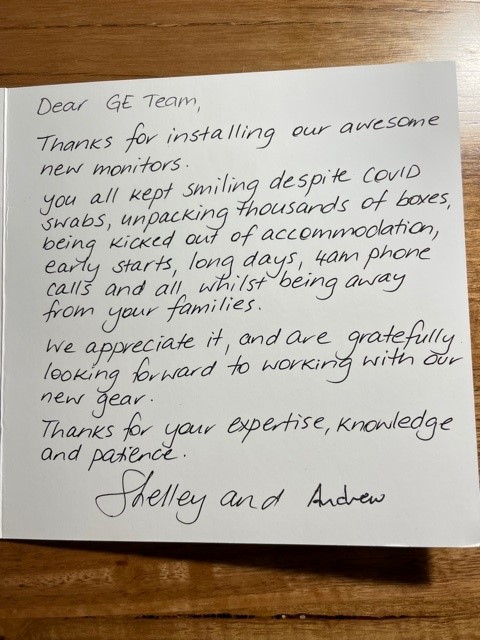The long-standing relationship with Launceston General Hospital (LGH) and GE has existed for over 20 years. Moreover, this rapport has been sustained by the GE sales, service and support teams with strong leadership from the Victorian sales and service teams. Additionally, the Tasmanian-based GE field engineer in Launceston has been a vital key to keeping this account supported for many years.
Launceston General Hospital is the only major hospital north of the state and is one of the three main public hospitals in Tasmania, Australia.
GE recently installed a monitoring system that went across the emergency department (ED), critical care unit (CCU), acute medical ward and hospital-wide telemetry for CARESCAPE monitors and CARESCAPE ONE (CS1) modules, which networked with many Central Stations and CARESCAPE Gateways. This connectivity solution links to their hospital server, which will go to their electrical medical record (EMR) down the road.
Above: One of the Central Stations
What this means for the customer is that they now have better and smarter bedside monitoring across the entire hospital.
Above: GE Field Service Engineer - Subash Basnet
“The CS1 transport monitors allow us flexibility to travel between monitored areas and exchange equipment whilst not interrupting patient monitoring. The new telemetry will increase the capacity to new wards and areas and now adequately cover the corridors and specialty areas like Renal Unit and cardiology outpatient areas.” Shelly Foale Nurse Unit Manager, Cardiology Service said.
The aging equipment in the hospital led to significant issues with telemetry bed block in the ED and mobility restriction for patients. However, this recent installation will increase from eight to 20 telemetry units to ensure they can assist with bed block in their ED because patients will not be waiting for spare units to become available.
Most importantly, this allows a maximisation of nursing time, which offers peace of mind to patients and staff of all skill levels.
As a whole, the setup of the new “war room” in their CCU will allow a focussed space for constant visualisation of up to 20 telemetry patients throughout all wards and areas of LGH, plus up to 80 bedside monitors if required. It has allowed them to lobby for additional staffing to support this increase in service requirements and will help them future proof their service with the latest equipment. The addition of the CS1 module has offered a huge amount of flexibility with bed-ridden patient movement.
At the time of writing, the world is in a pandemic, and it is fair to say that this installation had its extra challenges, including daily COVID-19 swab tests, but still the GE team kept their chins up.
Therefore, after the installation had been completed, a member of the GE team discovered this wonderful card in her diary from the team at LGH. It is pleasing to receive this feedback and in addition, it is going to help provide care to patients in Tasmania.








